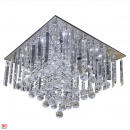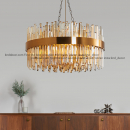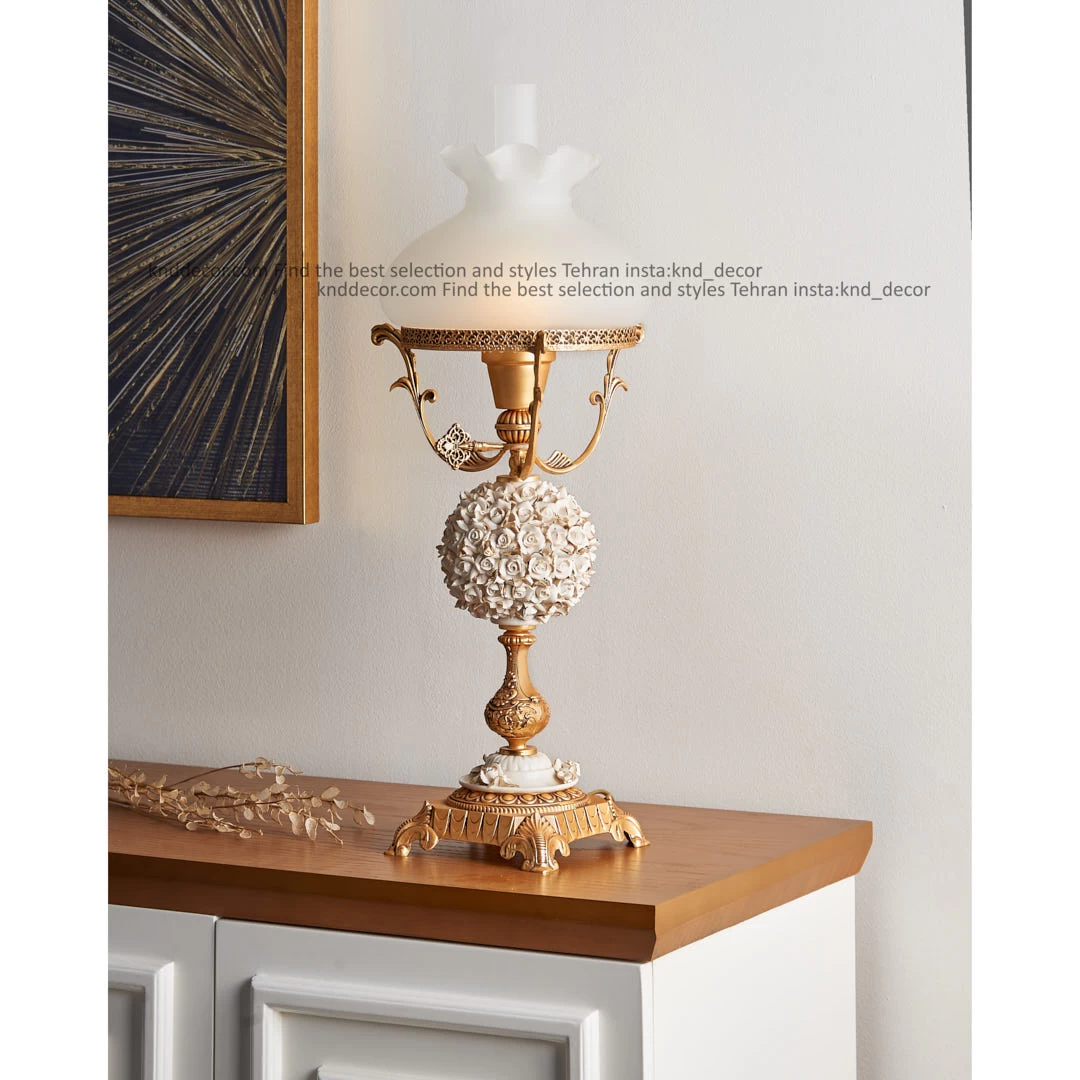Indoor Lighting
Indoor lighting plays a crucial role in setting the ambiance of a space. The choice of lighting fixtures, color temperature, and intensity can significantly impact the mood and functionality of a room. LED lights are popular for their energy efficiency, longevity, and versatility in creating different atmospheres. Warm white tones are often used for cozy areas, while cooler tones enhance productivity in workspaces. Smart lighting systems allow for customizable control, enabling users to adjust brightness and color remotely. Consider the purpose of each room to determine the most suitable indoor lighting design.
Indoor lighting encompasses various elements, including:
1. Light Fixtures: These include ceiling lights, pendant lights, chandeliers, wall sconces, floor lamps, and table lamps.
2. Bulbs: Different types, such as incandescent, fluorescent, LED, and halogen, offer various color temperatures and energy efficiencies.
3. Color Temperature: Measured in Kelvin (K), it defines the warmth or coolness of light. Warm tones (e.g., 2700K) create a cozy atmosphere, while cooler tones (e.g., 5000K) are more energizing.
4. Intensity/Brightness: Controlled by lumens, it influences the overall illumination in a space. Dimmers provide flexibility in adjusting light levels.
By carefully considering these elements, one can create a well-balanced and aesthetically pleasing indoor lighting design.
The role of indoor lighting in home design is multifaceted, influencing both the aesthetics and functionality of a space:
1. Ambiance: Lighting sets the mood and ambiance of different rooms. Warm, soft lighting in living areas creates a cozy atmosphere, while bright, cool lighting in workspaces fosters productivity.
2. Highlighting Architecture and Decor: Well-designed lighting can accentuate architectural features, artwork, or specific decor elements, adding visual interest and depth to the overall design.
3. Task Illumination: Proper lighting in areas like kitchens, study corners, or workspaces enhances functionality and aids in performing specific tasks efficiently.
4. Color Rendering: The choice of lighting affects how colors appear in a room. Accurate color rendering ensures that the true colors of furnishings, paint, and decor are represented.
Considering these aspects, thoughtful indoor lighting design becomes an integral part of creating a comfortable, visually appealing, and functional home.
Indoor lighting is neither furniture nor a home appliance. It falls under the category of home furnishings and fixtures. Lighting fixtures, such as lamps, chandeliers, and ceiling lights, are considered part of interior design, enhancing the aesthetics and functionality of a space. While not classified as furniture or appliances, indoor lighting plays a crucial role in shaping the overall ambiance and atmosphere within a home.


People use chandeliers for several reasons:
1. Aesthetic Appeal: Chandeliers add a touch of elegance and sophistication to a space, serving as a focal point and contributing to the overall aesthetic of a room.
2. Ambiance: The design and arrangement of chandelier lights create a warm and inviting ambiance. They often emit a soft, diffused glow, enhancing the atmosphere in dining rooms, living areas, or entryways.
3. Statement Piece: Chandeliers can function as statement pieces, showcasing personal style and complementing the interior design of a room. They come in various styles, sizes, and materials to suit different tastes.
4. Versatility: Chandeliers are versatile and can be used in various settings, from traditional to contemporary interiors. They come in diverse designs, ranging from classic crystal chandeliers to modern, minimalistic fixtures.
Whether used in dining rooms, entryways, or bedrooms, chandeliers serve both practical and aesthetic purposes, making them a popular choice in interior lighting design.
People use lampshades in living rooms and bedrooms for several reasons:
1. Softened Light: Lampshades diffuse and soften the light emitted from the bulb, creating a warm and cozy atmosphere in living spaces and bedrooms. This helps to avoid harsh lighting and promotes a more relaxed ambiance.
2. Aesthetic Appeal: Lampshades come in various styles, colors, and materials, allowing homeowners to enhance the decor and aesthetics of their living rooms and bedrooms. They can complement or contrast with the overall design theme.
3. Directed Lighting: Lampshades help direct light downwards or towards specific areas, making them ideal for reading corners, bedside tables, or accent lighting. This focused illumination enhances functionality in these spaces.
4. Reduced Glare: Lampshades help minimize glare and prevent direct exposure to the light source, making them suitable for creating comfortable reading or relaxation zones within a room.
Traditional incandescent bulbs are less energy-efficient because they produce light by heating a filament, resulting in a significant amount of energy being lost as heat. LED bulbs, on the other hand, are much more energy-efficient, producing light through a process that generates less heat.
If a chandelier is equipped with LED bulbs or other energy-efficient options, it can significantly reduce energy consumption compared to chandeliers using incandescent bulbs. Additionally, using dimmer switches or smart lighting controls with the chandelier can further enhance energy efficiency by allowing users to adjust the brightness according to their needs.
In summary, the energy consumption of chandeliers can vary, but the choice of bulbs and control mechanisms can play a crucial role in determining their overall efficiency.
The main purpose of a lampshade is to:
1. Diffuse Light: Lampshades are designed to soften and diffuse the light emitted from the bulb. This diffused light helps create a warm and inviting ambiance, reducing harsh glare and shadows.
2. Direct Light: Lampshades help direct the light downward or toward specific areas, providing focused illumination. This is particularly useful in activities such as reading or accent lighting.
3. Aesthetic Enhancement: Lampshades come in various styles, colors, and materials, allowing them to enhance the overall aesthetic appeal of a room. They can complement the decor and contribute to the visual harmony of the space.
4. Control Glare: Lampshades prevent direct exposure to the light source, minimizing glare. This makes them suitable for creating comfortable and cozy environments in living rooms, bedrooms, or other living spaces.
5.Privacy and Intimacy: In bedrooms, lampshades contribute to a sense of privacy and intimacy by providing softer, muted lighting. This is conducive to relaxation and sleep.


Overall, lampshades serve both functional and decorative purposes, making them essential elements in interior lighting design.
There are several types of lampshades, each with its unique style and function. Some common types include:
1. Drum Lampshades: These have a cylindrical shape with equal-sized openings at the top and bottom, providing a modern and clean look. They work well in contemporary settings.
2. Empire Lampshades: Featuring a wider bottom and a narrower top, these lampshades have a classic, traditional silhouette. They often work well in formal or traditional decor.
3. Bell Lampshades:Resembling an upside-down bell, these lampshades have a flared shape. They are versatile and can suit both traditional and modern settings.
4. Rectangular Lampshades: These lampshades have a rectangular shape, providing a more contemporary and geometric look. They are suitable for modern or minimalist decor.
5. Coolie Lampshades: These have a wide, shallow shape with a downward slope. They are often used for creating a wider spread of light and are commonly seen in pendant lights.
When choosing a lampshade, consider the style of the room, the type of lamp base, and the desired lighting effect to ensure a cohesive and functional design.
Indoor lighting encompasses various elements, including:
The role of indoor lighting in home design is multifaceted, influencing both the aesthetics and functionality of a space:
Indoor lighting is neither furniture nor a home appliance. It falls under the category of home furnishings and fixtures. Lighting fixtures, such as lamps, chandeliers, and ceiling lights, are considered part of interior design, enhancing the aesthetics and functionality of a space. While not classified as furniture or appliances, indoor lighting plays a crucial role in shaping the overall ambiance and atmosphere within a home.


People use chandeliers for several reasons:
People use lampshades in living rooms and bedrooms for several reasons:
Traditional incandescent bulbs are less energy-efficient because they produce light by heating a filament, resulting in a significant amount of energy being lost as heat. LED bulbs, on the other hand, are much more energy-efficient, producing light through a process that generates less heat.
The main purpose of a lampshade is to:


There are several types of lampshades, each with its unique style and function. Some common types include:
FAQs
What material do you use for lampshade?
Lampshades can be made from various materials, including fabric, paper, glass, metal, and plastic.
Does lampshade color matter?
Yes, lampshade color matters. It influences the ambiance by affecting the tone of the light and contributes to the overall aesthetic of the room.
Which type of chandelier is best?
The best type of chandelier depends on your personal style, the room's decor, and the desired ambiance. Popular types include crystal, modern, and transitional chandeliers.
What kind of light is used in chandeliers?
Chandeliers commonly use a variety of light bulbs, including incandescent, LED, and halogen. LED bulbs are increasingly popular due to their energy efficiency and versatility.
 +7929688-88-14
+7929688-88-14

 English
English
 Persian
Persian
 Russian
Russian
 Chinese
Chinese


 +7929688-88-14
+7929688-88-14


